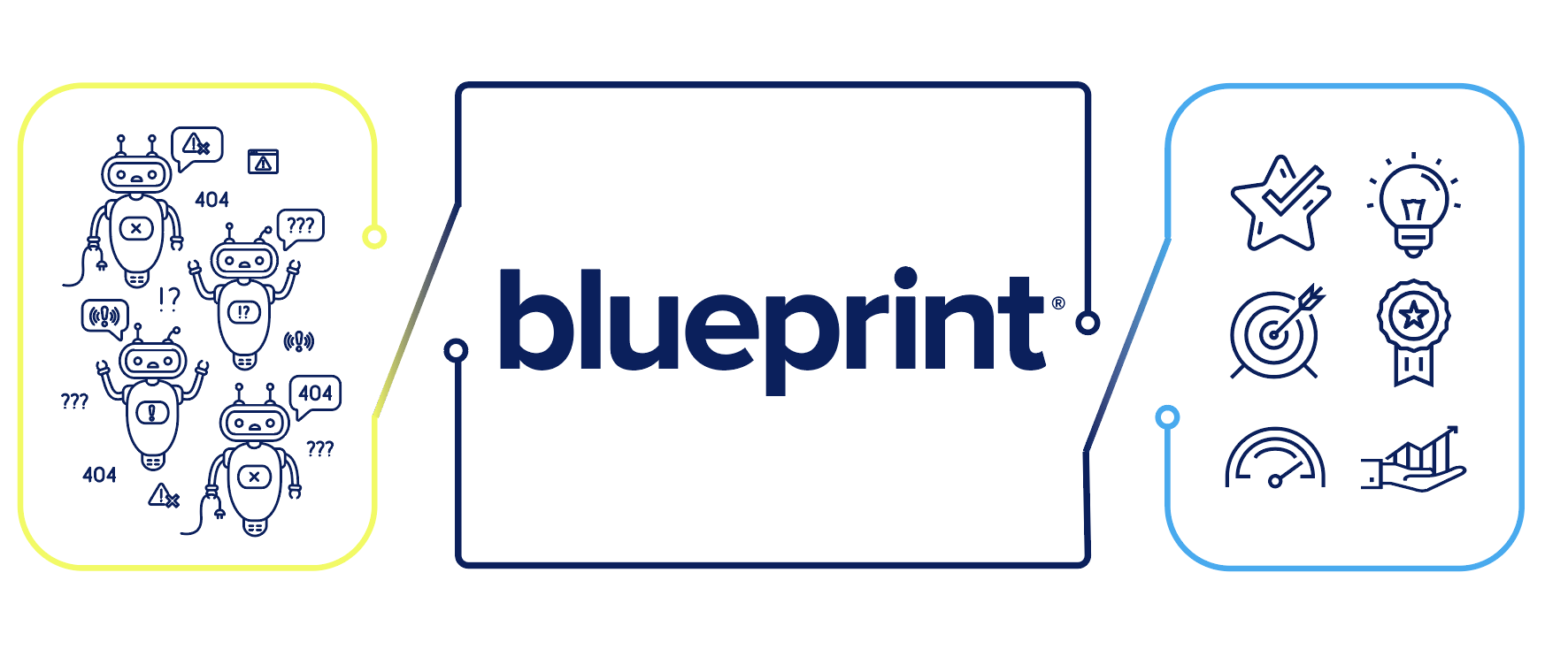What is Value Mapping: Everything You Need to Know
These are some of the most common pain points organizations are experiencing with their automation initiatives:
1) They don’t know what automated processes they have in their automation estates
2) They don’t know where there is redundancy and waste in their automation portfolios, causing them to lose money and inflate automation’s cost of ownership
We’ve already covered why organizations find themselves facing these challenges when we introduced the idea of process debt and explained why business process analysis is so important for automation.
In this article, we will dive into the solution: value mapping.
What is Value Mapping?
The definition of Value Mapping is an analysis of one or the entirety of an organization’s automation estate to present the value of each automated process or whole automation portfolio.

Not understanding your automation estate leads to a host of challenges and negative impacts, including:
- Not knowing which automations are delivering value and which are costing more money to maintain than they’re worth
- Where you have expensive and off-task processes
- Where there’s wasted effort and redundancy
From a high-level, Business Value Mapping enables companies to see precisely what automations they have, how complex those automations are, and where there are redundancies in their automations. However, there are also more granular, specific benefits every organization would welcome.
The Benefits of Value Mapping
When you perform a Value Mapping Assessment on your entire automation estate, the benefits you will realize include:
- Understanding exactly what automated processes you have in your estate
- Where you have hidden and structural deficiencies in your automation design
- Where there are opportunities to:
- Optimize your automated processes
- Reuse process components
- Re-platform automations to another RPA tool to lower operational costs and enable scale
- Retire redundant processes that create maintenance headaches and deliver marginal value
At a more granular level, when you perform a Value Map Assessment on individual processes, you can expect to uncover:
- Where there’s redundancy in a process as a result of indiscriminately copying automation components—as is a common practice for those that use Automation Anywhere for RPA design, deployment, and orchestration
- Where there are reuse opportunities by analyzing Metabot usage and efficiency across an entire automation estate
- Where there are orphaned processes or process components across an estate
The benefits are enough to get anyone interested in Value Mapping, but without understanding how this type of assessment is executed, the results are little more than smoke and mirrors.
How to Perform a Value Map Assessment
There are essentially two ways you can perform a value map assessment.
The first is you devote highly-skilled, dedicated internal resources to audit every automation you have in production.
This requires them to read code, look into every automated process in whichever RPA tool you use for development, deployment, and orchestration, understand what that process does, and document it in a way that it can be collaboratively analyzed and understood for improvement opportunities.
This approach can also be outsourced to a service integrator or consultancy. Needless to say, both routes are incredibly expensive, time-consuming, and can present inaccuracies because they introduce the element of human error where people might misinterpret what’s happening in an automation. So even after you get your results in a matter of months after countless face-to-face interviews with your process owners and subject matter experts, the results might not be that reliable.
The other option is to use Blueprint’s much more cost-effective, reliable, and faster Value Map Assessment service.

Blueprint relies on the Blueprint platform to perform the bulk of its Value Map Assessments, so you get comprehensive, actionable insights in days instead of weeks or months.
What’s more, in Blueprint’s comprehensive analysis of your automation estate or individual automations, we’ll show you exactly where there is redundancy, waste, unnecessary complexity, design flaws, and structural deficiencies and provide detailed recommendations on how to improve your processes and your entire automation estate to increase returns, make better decisions, and be more effective.
Want to learn more about Blueprint’s Value Map Assessment? Download the brochure!
Share this
Recent Stories

3 Reasons Why Integrations Are So Important for Business Process Analysis

Process Decomposition: Why It’s So Important


